Key Benefits of DMR Technology
- As DMR is a fully public, open standard backed by a huge variety of suppliers. Through this users have both the security of supply and the advantages of continuous, competitive development. Open standards encourage wide ranging supplier participation; there are many examples of the successes of technologies developed in this way. The DMR standard scores highly against legacy analogue systems and other digital approaches.
- the site is small and at all times for the lifetime of the system all users radios will be in direct range of all others users
- the frequencies required have been obtained because splitting an existing license into multiple 6.25 kHz channels will not be an option for regulatory or interference reason
- cost or availability of more robust 12.5 kHz channel licences is an issue
- there is no need to have compatibility with legacy 12.5 kHz analogue systems (see below)
- ARC4 40 bit
- DES 64 bit
- AES128 128 bit
- AES256 256 bit
- PTT
- Emergency Call
- Periodic every x seconds
- Distance travelled
- Immediate on demand of the dispatcher
- Normal DMO - One communication on a 12,5 kHz channel
- Frequency efficient DMO - Two independent communications on a 12,5 kHz channel using both TDMA time slots.
- Constant envelope modulation allows the use of non-linear high efficiency power amplifiers
- Less transmitters
- Reduced antenna combiner losses
- Less power consumption for equivalent range
- Can be used on traditional 12,5 kHz channels
DMR digital systems enable these key benefits:
DMR enables a single 12.5 kHz channel to support two simultaneous and independent calls. This is achieved using TDMA, Time Division Multiple Access. Under TDMA DMR retains the 12.5 kHz channel width and divides it into two alternating timeslots A and B (illustrated in figure 1 below) where each timeslot acts as a separate communication path. In figure 1 Radios 1 and 3 are talking on time slot 1 and Radios 2 and 4 are talking on timeslot 2.
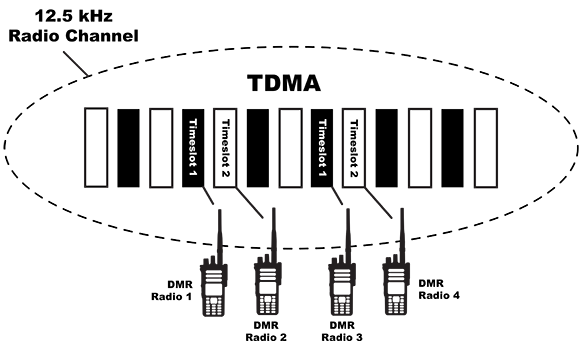
Figure 1: 2 timeslot TDMA structure of DMR
This TDMA approach to increasing call capacity in a given bandwidth is very well tried and tested. TETRA and GSM cellular mobile – two of the world’s most widely adopted two-way radio communication technologies – are TDMA systems. The US public safety radio standard, P25, is also currently evolving its Phase II specifications to two-time slot TDMA.
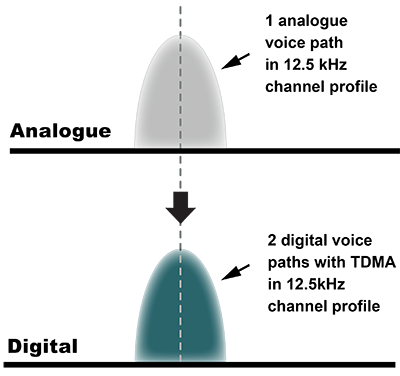
Figure 2: Analogue to digital migration with DMR systems
The practical reality falls short of this. In many countries no specific 6.25 kHz licenses exist and the regulatory regime does not permit a license holder to operate two 6.25 kHz channels in an existing 12.5 kHz licence. It is usually possible to operate with a single 6.25 kHz radio channel within a 12.5 kHz license but this gives the user no increase in capacity. This situation is illustrated in figure 3 below.
In the United States, where 6.25 kHz channels are licensed, licence holders have not been permitted to sub-divide existing 12.5 kHz licenses into multiple 6.25 kHz channels. To increase capacity for 6.25 kHz FDMA systems, users have to seek new 6.25 kHz licences in other areas of the spectrum.
There remains a difficulty in jurisdictions where users are allowed to squeeze two 6.25 kHz paths into an existing licence. Operating a system at one site using two channels that are adjacent to each other in the spectrum is well known to create a risk of interference. So for this reason users would still most likely want to obtain a new licence in another area of the spectrum to increase capacity with a 6.25 kHz FDMA solution (see figure 4 below). In contrast because DMR’s two TDMA paths fit neatly into the existing channel structure, no new interference issues will be encountered when DMR systems are installed.
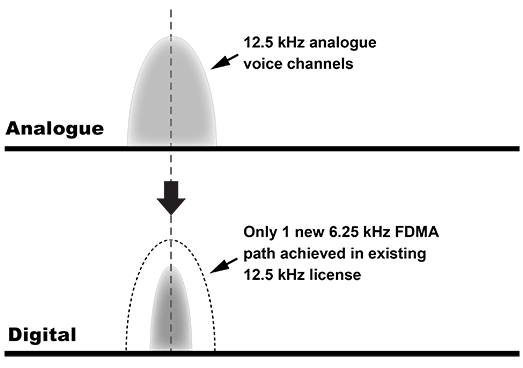
Figure 3: Analogue to digital migration with 6.25 kHz digital FDMA systems
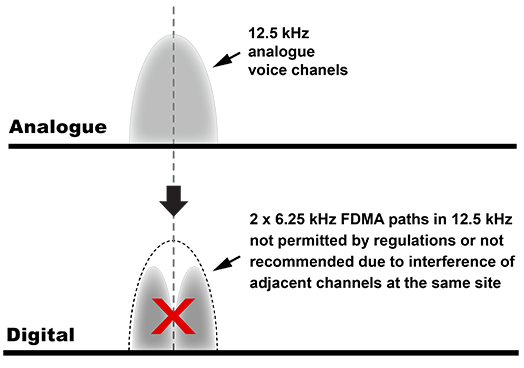
Figure 4: Analogue to digital migration with 6.25 kHz FDMA
One potential advantage of the FDMA 6.25 kHz approach is that you do not need a repeater to co-ordinate TDMA timeslots to deliver two independent talk paths as is necessary for DMR. (DMR systems do work well without repeaters and still deliver the many benefits inherent in DMR systems such as reverse channel signalling, but not two fully independent channels per 12.5 kHz of spectrum). Without a repeater, however, all radios need to be in range of each other at all times to get a predictable doubling of capacity with FDMA. So if the system needs a repeater for extra range, or to cover a problem area, now or in the future (e.g. with a site move or the opening of a new location) this benefit of FDMA is of limited value. DMR systems also have the advantage that 12.5 kHz signals are more robust to interference than 6.25 kHz signals. This means that in noisy environments a signal on a 12.5 kHz channel is less likely to be degraded than a 6.25 kHz signal and so will be more likely to give an acceptable level of service to a radio user.
The non-repeater advantage of 6.25 kHz FDMA systems for capacity increase is only beneficial where:
DMR, which was developed from the start with long term business needs in mind, does not have these constraints.
License holders may need to keep hold of existing licenses to ensure backwards compatibility with their own legacy radios or with an external organisation’s analogue system. As DMR uses 12.5 kHz channels the required spectrum compatibility is built in. This is illustrated in figure 5 below.

Figure 5: Compatibility of DMR spectrum channels with legacy analogue systems
With DMR TDMA you get two communications channels with one repeater, one antenna and a simple duplexer. Compared to FDMA solutions, two-slot TDMA allows you to achieve 6.25 kHz efficiency while minimising investments in repeaters and combining equipment. The required equipment of the two approaches for a simple system is shown in figure 6 below.
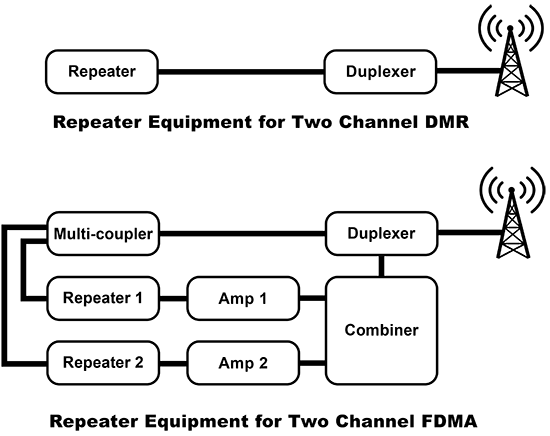
Figure 6: Equipment required for two channel FDMA and TDMA system
With FDMA 6.25 kHz systems there is a lower tolerance for errors introduced by the phenomenon of oscillator ageing and resulting signal drift away from the desired centre frequency by the transmitting radio. This results in less robust adjacent channel protection, making the system vulnerable to interference. Specialised equipment; a high stability oscillator can be introduced; but at a cost. In contrast, two-slot TDMA achieves stable two-channel equivalency using single-channel equipment. No extra repeaters or combining equipment are required (and there is lower drain on air conditioning and less back up power supplies needed at a repeater site).
Maximising battery life has always been one of the great challenges for mobile devices with limited options for increasing the talk time on a single charge. Since an individual call on two-slot TDMA only uses one of the two timeslots it requires only half of the transmitter’s capacity. The transmitter is idle half of the time; whenever it’s the unused timeslot’s “turn”. Using the example of a typical duty cycle of 5 percent transmit, 5 percent receive, and 90 percent idle, the transmit time accounts for a high proportion of the drain on the radio’s battery. By cutting the effective transmit time in half, two-slot TDMA can enable up to 40 percent improvement over analogue radios.
(One manufacturer’s published product literature gives a talk time of 9 hours operation for analogue mode but 13 hours for digital mode on the same radio). DMR digital devices can also include sleep and power-management technologies that increase battery life.
Many factors affect power consumption in an individual device. When using published battery life figures for widely marketed DMR and FDMA digital radios data shows that for each hour of usage the TDMA require between 19% and 34% less battery capacity than the FDMA models.
Choosing a technology with lower energy use gives more flexibility as well as environmental benefits. As communications needs grow (for example greater data requirements) more battery capacity is needed and it seems logical to move towards technology that is inherently more efficient and capable of supporting additional functions. As discussed above, DMR infrastructure is also simpler than that required for FDMA systems, therefore needing less energy. These power efficient features give DMR users a leaner and greener radio network as well as one with the benefit of long battery life on the radios themselves.
Although DMR was primarily developed for civil and industrial applications the protection of the confidentiality of the exchanged information can be important.
The DMR Association has defined the following options for traffic encryption:
Both, voice and data traffic are encrypted.
There is a standardized option for the transmission of position information from DMR radios over the network. The LIP protocol it-self has been taken from ETSI-TETRA, it allows for the transmission of localization data in an interoperable format and for the Over the Air configuration / modifications of triggers.
The DMR radio will transmit its position data upon receive of a trigger, examples for trigger criteria are:
To get full benefit for large fleets of users the DMR Associations has developed a highly efficient method for the transmission of localization data over the network that is capable to poll up to 1000 DMR radios per site on a single channel. In technical terms we call it USBD Data Polling over the Control Channel Alternate slot.
The end-to-end digital nature of DMR means that applications such as text messaging, GPS and telemetry can be easily added onto radio devices and systems. The DMR standard supports the transmission of IP data over the air enabling the easy development of standard applications.
The doubling of channel capacity that DMR implementations achieve is also key to adding data applications in parallel to the voice services.
An outstanding feature of DMR over other digital standards is the Application Interface Standard (AIS). This is a standardized data interface that enables the interconnection of DMR networks to other entities such as Control Rooms, Data Centres or other communication networks through an interoperable (manufacturer independent) protocol.
Figure 7: Location based services being used with a DMR system to tracking user locations.
While voice is using the first time slot then the second time-slot can, in a TDMA system, be used for transmitting application data such as text messaging or location data in parallel. This is useful, for example, in dispatch systems that provide both verbal and visual dispatch instructions. This is enhanced data capability is becoming increasingly important in data rich environments.
The future roadmap for two-slot TDMA applications includes the ability to temporarily combine both slots to effectively double the data rate to 9.6 kb/s, or to use both slots together to enable full-duplex, phone call like, private calls. FDMA radios cannot deliver these capabilities without the expense of adding extra transceivers and using additional licensed channels. This is because in a single 6.25 kHz FDMA channel there is one communication path; only person can talk, but not two, or you can transmit voice or data, but not both and the data rate is limited to the 4.8 kb/s that can be squeezed down a single 6.25 kHz channel.
The DMR standard allows for the ability to use the second time-slot for reverse-channel signalling – that is, instructions in the form of signalling being sent to the radio on the second time slot channel while the first channel is in a call. This enables priority call control, remote control of the transmitting radio, or emergency call pre-emption and gives precise control and flexibility to the operator of a radio system. FDMA systems cannot deliver similar functionality because they are limited to one path only per spectrum channel.
DMR digital technology provides better noise rejection and preserves voice quality over a greater range than analogue, especially at the farthest edges of the transmission range. This is because a great deal of effort was put into selecting Forward Error Correction (FEC) and Cyclic Redundancy Check (CRC) coders when developing the standard. With these coders receiving radios detect and automatically correct transmission errors by analysing bits to detect errors. The DMR standard specifies over 14 different coders to be used, each matched to different types of traffic. Through the use of coders and other techniques, digital processing is able to screen out noise and re-construct signals from degraded transmissions. Users can hear much more clearly — increasing the effective range of the radio solution and keeping users responsive to changing situations in the field.
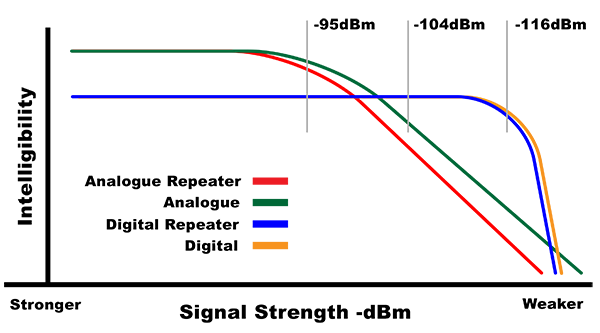
Figure 8: Range improvement with DMR compared to analogue
There is some debate about which digital system gives the best coverage; a 12.5 kHz or a 6.25 kHz channel based system. Both have advantages and disadvantages. 6.25 kHz based systems are disadvantaged because when you squeeze multiple high power transmissions in 6.25 kHz channels into the spectrum, it is necessary to limit the modulating signal of each transmission quite tightly; in technical terms reduce the signal deviation; so as not to cause interference in the next channel along in the spectrum. This limit on the signal deviation means the receiver is less able to distinguish whether it is being sent a one or a zero when the signal is weak – i.e. at the edge of the system’s range. This, in theory, impacts the coverage of 6.25 kHz systems.
Some regulators will also limit the power of repeaters used in 6.25 kHz FDMA systems to 50% of that available to a 12.5 kHz DMR system, where a user wishes to operate two 6.25 kHz repeaters in a given 12.5 kHz of spectrum. This is carried out to ensure that overall power levels are maintained per unit of spectrum. Such restrictions may also impact range. DMR systems also benefit from superior implementation of Forward Error Correction protocols. FDMA systems do, however, benefit from the fact that with a 6.25 kHz channel there is a lower noise floor than with a wider 12.5 kHz channel.
This mode of communications provides mobile users with the ability to communicate directly from radio to radio when out of range of the network.
DMR offers two possibilities for DMO:
Optimal efficiency was a key objective in designing DMR. This applies not only to performance, equipment cost and ease of implementation but also to energy efficiency.
4 Level FSK modulation
2 Slot TDMA combines two channels on a single carrier
This translates to lower overall power consumption requiring less, if any, air conditioning and makes the radio site more cost-effective. It is also easier to get hosted on existing radio sites. Many DMR Basestation run off-grid with solar power panels at zero CO2 emission and energy cost.
DMR is a fully public open standard backed by a wide variety of vendors meaning that buyers can be assured of continuity of supply. There are many examples of the success of open standards because this encourages wide ranging supplier participation. More suppliers results in more choice for users, more rapid product development and lower prices from competitive pressures. Today DMR is the most widely adopted digital two way radio system, in active use in over 100 countries and is the market leading digital PMR technology.